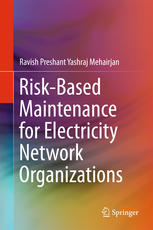

Most ebook files are in PDF format, so you can easily read them using various software such as Foxit Reader or directly on the Google Chrome browser.
Some ebook files are released by publishers in other formats such as .awz, .mobi, .epub, .fb2, etc. You may need to install specific software to read these formats on mobile/PC, such as Calibre.
Please read the tutorial at this link: https://ebookbell.com/faq
We offer FREE conversion to the popular formats you request; however, this may take some time. Therefore, right after payment, please email us, and we will try to provide the service as quickly as possible.
For some exceptional file formats or broken links (if any), please refrain from opening any disputes. Instead, email us first, and we will try to assist within a maximum of 6 hours.
EbookBell Team

4.1
70 reviewsThis book focuses on theintroduction of new and modernmaintenance management frameworksof assets in the electricity & gas network sector and more specifically, on electricity networks for distribution. The author describes methodologies for developing and implementing maintenance management maturity models, using case studies to show how these have been applied. These maturity models are discussed as part of an overarching, multi-disciplinary organizational maintenance management professionalization framework.This book adds a new dimension to the well-known Reliability Centered Maintenance (RCM) method, by incorporating failure modes via multiple scenarios into business values, by means of statistical risk calculation methods. The author demonstrates a method calledUtility Risk Linked RCM,which uses a statistical tool to develop failure models which can be used to predict future failure behavior of assets in relation to corporate business values. This new method is a practical, structured and comprehensive framework for assessing risk based maintenance policies. The book also proposes a condition monitoring framework that can be used as a guide to assist asset managers in identifying the relationship between failure modes, ageing processes to select amongst condition monitoring regimes.